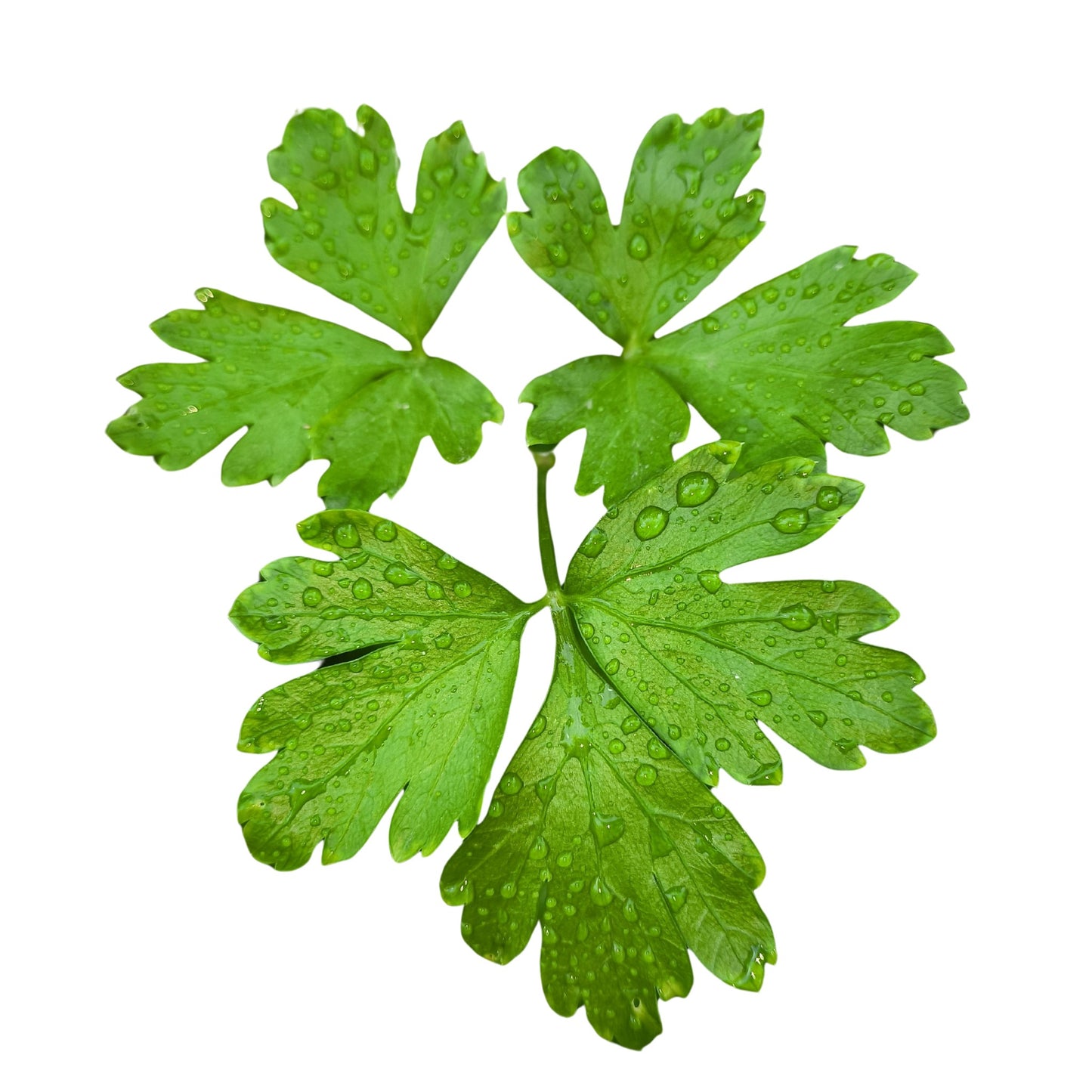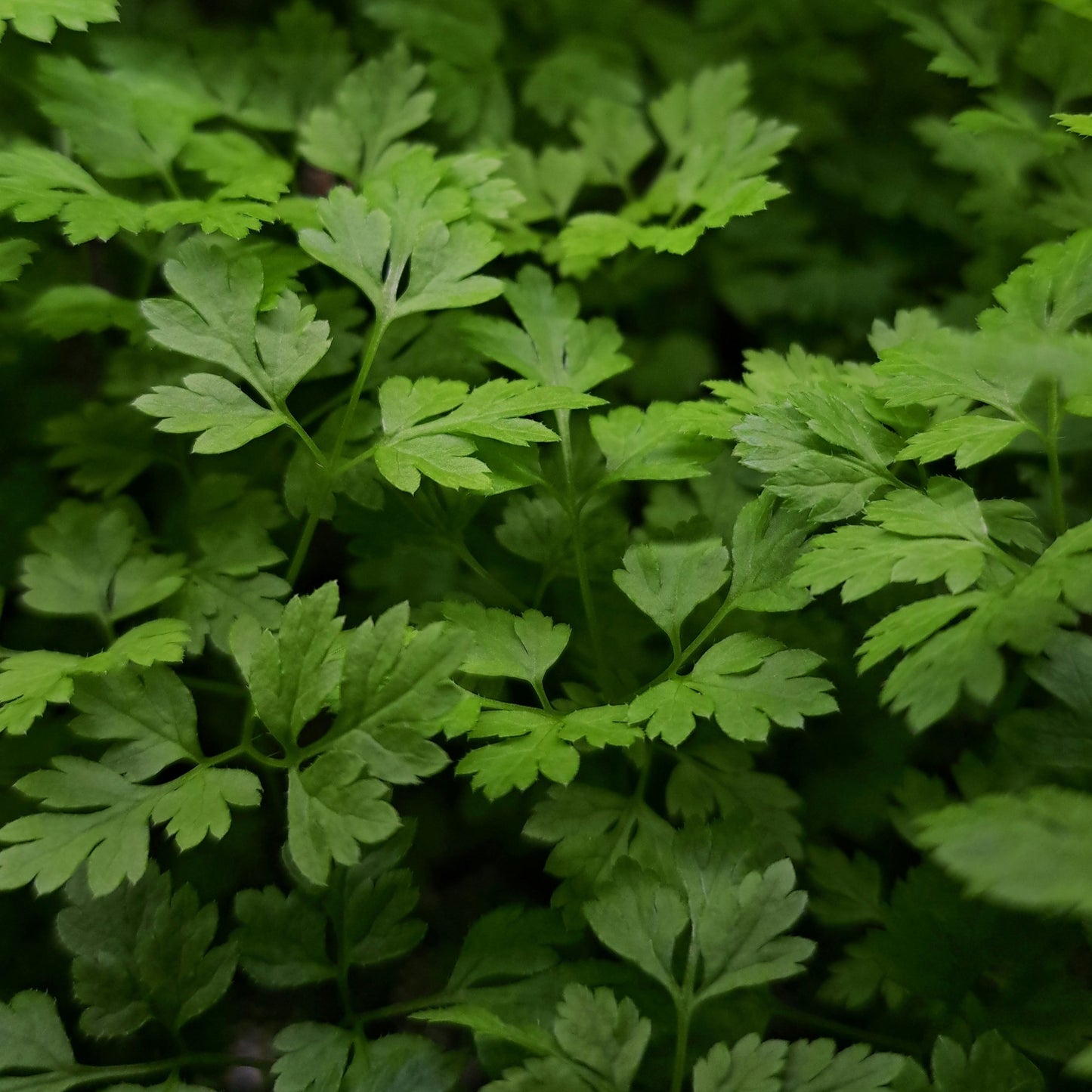Jonquil
Common Chervil - 0.5 Gram
Common Chervil - 0.5 Gram
Couldn't load pickup availability
Chervil is a delicate, mildly aromatic herb often described as having a subtle anise or liquorice-like flavour, with a hint of parsley. A classic ingredient in French cuisine, particularly in “fines herbes”, it’s best used fresh to enhance fish, poultry, eggs, and salads.
Plant type Hardy annual herb
Height 30–60 cm
Spread 15–30 cm
Leaves Finely divided, fern-like, bright to mid-green with a soft texture
Flowers Small, white, clustered in umbels, appearing in late spring or early summer if not harvested early
Flavour Mild, sweet, anise-like; best fresh, as dried leaves quickly lose flavour
Scent Slightly spicy with a sweet undertone
Chervil grows quickly and is perfect for cool-season gardening, thriving in spring and autumn, or in shady summer spots.
Growing Conditions
Light Prefers partial shade or dappled sunlight; too much heat or full sun can cause it to bolt
Soil Light, moist, well-draining soil enriched with compost or organic matter
pH Neutral to slightly alkaline (6.5–7.5)
Watering Regular, even moisture is crucial; soil should never dry out completely
Temperature Grows best in cool weather (10–20°C); bolts quickly in heat
Companions Does well alongside lettuce, mint, and coriander; attracts beneficial insects
Chervil doesn’t transplant well due to its long taproot, so it's best direct-sown or grown in place.
Sowing Instructions
When to sow
Outdoors Early spring or late summer to early autumn
Indoors Not recommended due to root disturbance
Seed depth 0.5–1 cm
Germination temp 12–18°C (cooler temps preferred)
Germination time 7–14 days
Spacing Thin seedlings to 15–20 cm apart
Succession planting Sow every 3–4 weeks for a continuous supply
Bolting tip In warm climates, choose a shady, cool spot or grow in spring/autumn to delay flowering
Common Pests & Problems
Chervil is relatively trouble-free, but can occasionally face a few issues
Pests
Aphids Often found on stems and new growth – spray with a strong jet of water or use neem oil
Slugs & snails Can eat young seedlings – use copper tape, traps, or diatomaceous earth
Leaf miners Tunnel through leaves – remove and destroy affected foliage
Spider mites Rare, but may appear in dry indoor or greenhouse conditions – increase humidity or use insecticidal soap
Diseases
Downy mildew Can occur in damp, shaded conditions – ensure good air circulation and avoid wetting foliage
Powdery mildew Appears in overcrowded or overly humid conditions – space plants well and prune if needed
Root rot Caused by overwatering or poorly draining soil – ensure soil is light and drainage is good
Harvesting Tips
Begin harvesting when plants are 10–15 cm tall
Pick outer leaves first, regularly to promote new growth
For best flavour, use fresh and add at the end of cooking
Harvest before flowering, as leaves become bitter after bolting
Share




